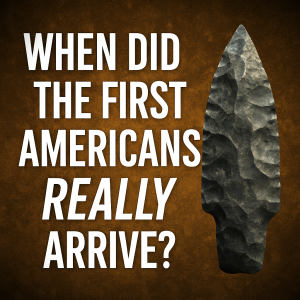
What if the first humans arrived in the Americas 20,000 years before we thought?
In this episode of The Mysteries of Latin America, we journey to Monte Verde in southern Chile, where archaeologist Tom Dillehay uncovered fire pits, tools—and even chewed seaweed with human saliva—dating back nearly 15,000 years. This single discovery shattered the long-held Clovis First theory and changed our entire understanding of how the Americas were first populated.
But that’s not even the most shocking part…
Monte Verde may not be the oldest site. In fact, newer evidence hints that humans might’ve been in the Americas 33,000 years ago.
🌎 In this episode:
• The rise and fall of the Clovis First theory
• What was discovered at Monte Verde
• The intense backlash—and how science caught up
• Alternate theories: boats, kelp highways, and coastal migration
• Other early sites: Pedra Furada, Topper, and White Sands footprints
• Why Monte Verde matters for Indigenous history today
🎧 Prefer to read along? Check out the full script here: [Optional – Upload to your site or Substack if you want]
🔗 Sources & References
• Dillehay, T. D. (1997). Monte Verde: A Late Pleistocene Settlement in Chile. Smithsonian Institution Press.
• Dillehay et al. (2008). “Monte Verde: Seaweed, Food, Medicine, and the Peopling of South America.” Science, Vol. 320.
• Waters, M.R., Stafford, T.W. (2007). “Redefining the Age of Clovis.” Science, Vol. 315.
• Halligan et al. (2020). “Evidence of Humans in North America During the Last Glacial Maximum.” Science, Vol. 369.
• UNESCO World Heritage Tentative List: Monte Verde Archaeological Site
• National Geographic (2021): “First Americans Arrived Thousands of Years Earlier Than Thought”
💬 Got a theory about the first Americans?
Drop it in the comments or email me at andy@andycancun.com
🔔 Like this episode?
Follow The Mysteries of Latin America for more stories that challenge what we thought we knew.
No comments yet. Be the first to say something!